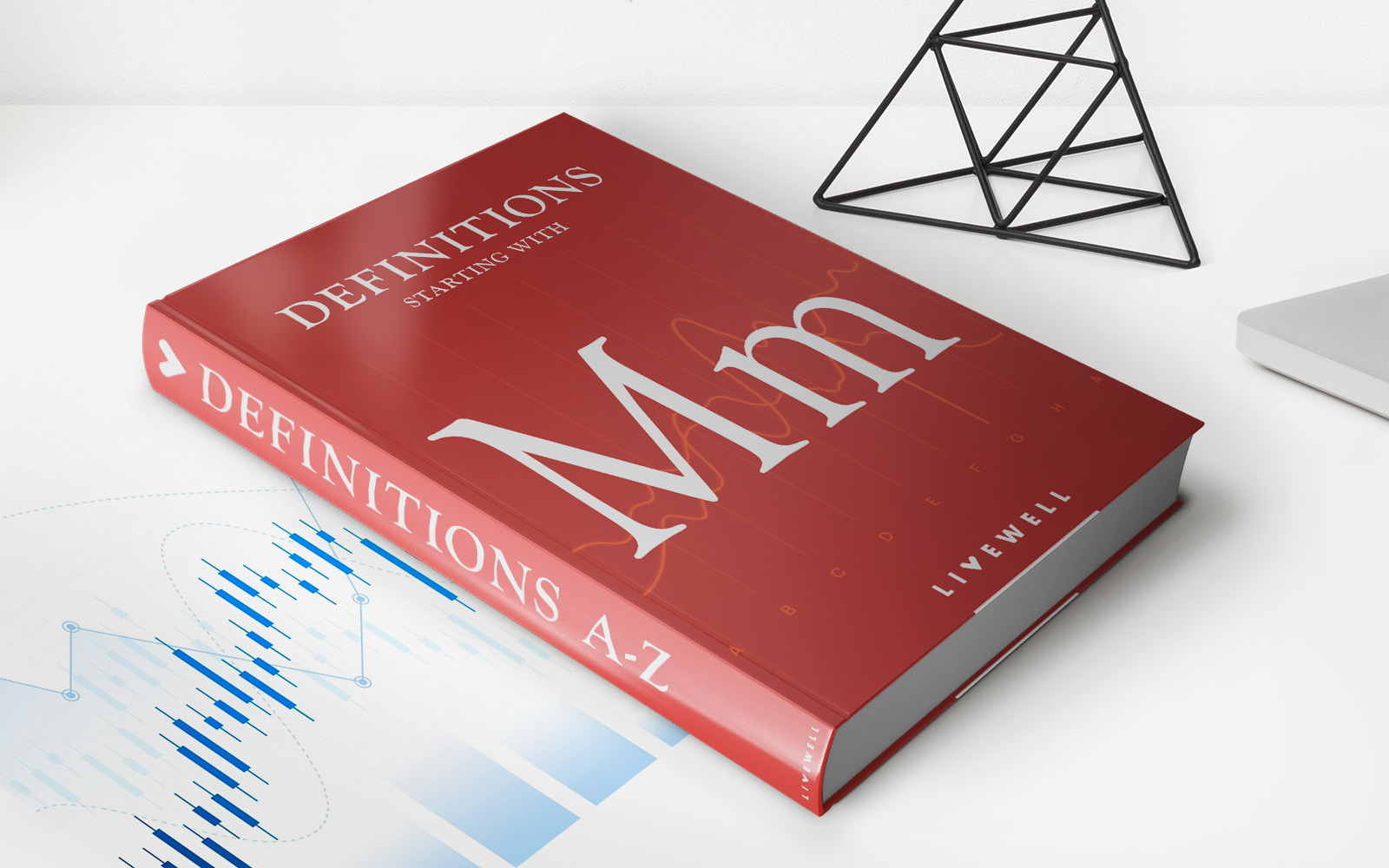Home>Finance>How To Figure Out How A Change In Capital Structure Affects Roe


Finance
How To Figure Out How A Change In Capital Structure Affects Roe
Published: December 24, 2023
Learn how changes in capital structure can impact Return on Equity (ROE) in the field of finance. Find out how to analyze and understand the relationship between capital structure and ROE.
(Many of the links in this article redirect to a specific reviewed product. Your purchase of these products through affiliate links helps to generate commission for LiveWell, at no extra cost. Learn more)
Table of Contents
- Introduction
- Overview of Capital Structure
- Understanding Return on Equity (ROE)
- Factors Affecting ROE
- Importance of Capital Structure in ROE
- Methods to Analyze Capital Structure Changes
- Step-by-Step Guide to Analyzing the Impact of Capital Structure Changes on ROE
- Case Study: Analyzing the Effect of Capital Structure Changes on ROE
- Limitations and Considerations
- Conclusion
Introduction
When it comes to managing a company’s finances, understanding the relationship between capital structure and return on equity (ROE) is crucial. Capital structure refers to the composition of a company’s funding sources, including debt and equity. ROE, on the other hand, is a financial metric that represents the profitability and efficiency of a company in generating returns for its shareholders. By analyzing the impact of changes in capital structure on ROE, businesses can make informed decisions to optimize their financial performance.
In this article, we will delve into the intricacies of capital structure and ROE, exploring how changes in one can affect the other. We will also discuss the importance of capital structure in determining ROE and present various methods to analyze these changes. Lastly, we will walk you through a step-by-step guide to analyzing the effect of capital structure changes on ROE, using a hypothetical case study for practical understanding.
By the end of this article, you will have a comprehensive understanding of the relationship between capital structure and ROE, and be equipped with the knowledge to make informed financial decisions for your business.
Overview of Capital Structure
Capital structure refers to the way a company finances its operations and investments through a combination of debt and equity. Debt refers to borrowed funds that need to be repaid over time, typically with interest, while equity represents ownership in the company by shareholders. The specific mix between debt and equity, which constitutes a company’s capital structure, can have significant implications for the company’s financial stability, risk profile, and profitability.
There are various sources of debt that a company can utilize, including bank loans, bonds, and lines of credit. On the other hand, equity financing can come from issuing shares or retaining earnings. Companies with a higher proportion of debt in their capital structure are considered to have more leverage, while those with a higher proportion of equity are considered to be less leveraged.
The choice of capital structure is influenced by several factors, such as the industry in which the company operates, its stage of development, its growth objectives, and the prevailing market conditions. Companies may opt for a more debt-heavy capital structure to take advantage of tax benefits associated with interest payments and potentially enhance returns to shareholders. Conversely, companies may choose a more equity-heavy capital structure to minimize financial risk and ensure stability.
It is important to note that capital structure decisions are not fixed and can be adjusted over time based on the company’s financial performance, market conditions, and strategic objectives. However, any changes to the capital structure can have both positive and negative repercussions on the company’s financial health and performance.
Understanding Return on Equity (ROE)
Return on Equity (ROE) is a critical financial metric that measures the profitability and efficiency of a company in generating returns for its shareholders. It is calculated by dividing the net income of a company by its average shareholders’ equity over a specific period.
ROE provides valuable insights into how effectively a company utilizes its equity capital to generate profits. It is expressed as a percentage, representing the return on each dollar of equity invested in the company. A higher ROE indicates that the company is generating more profits relative to the amount of equity invested, which is generally viewed positively by investors and stakeholders.
ROE can be broken down into three components: net profit margin, asset turnover, and equity multiplier. The net profit margin represents the company’s ability to generate profits from its revenues. Asset turnover measures how efficiently the company utilizes its assets to generate sales. The equity multiplier indicates the company’s level of financial leverage, i.e., the extent to which it uses debt to finance its operations.
ROE is a key metric used by investors, analysts, and financial institutions to assess a company’s financial performance and compare it with its industry peers. A high ROE often signifies a financially healthy and efficient company, while a low ROE may indicate inefficiency or poor financial management.
However, it is essential to consider industry benchmarks, company size, and business model when evaluating ROE. Different industries have varying average ROE due to factors such as capital intensity, risk, and market dynamics. Comparing a company’s ROE to its competitors or industry average provides a more meaningful context for analysis.
It is worth noting that ROE should not be the sole factor in evaluating a company’s financial health. Additional financial metrics, such as return on assets (ROA), liquidity ratios, and debt ratios, should be considered to gain a more comprehensive understanding of the company’s overall performance and risk profile.
Factors Affecting ROE
Several factors can influence a company’s Return on Equity (ROE) and its ability to generate profits for shareholders. Understanding these factors is essential for identifying areas of improvement and optimizing ROE. Here are some key factors that affect ROE:
- Profit Margin: The profit margin, also known as net profit margin, is the ratio of net income to total revenue. A higher profit margin indicates that the company is generating more profit per dollar of sales, which tends to result in a higher ROE.
- Asset Turnover: Asset turnover measures how efficiently a company utilizes its assets to generate revenue. It is calculated by dividing total revenue by average total assets. A higher asset turnover indicates that the company is effectively using its assets to generate sales, leading to a higher ROE.
- Financial Leverage: Financial leverage is the use of borrowed funds to finance operations and investments. It is measured by the equity multiplier, which is the ratio of total assets to total equity. Higher leverage increases the proportion of debt in the capital structure, which can amplify returns but also increase financial risk. The impact of leverage on ROE depends on the cost of debt, interest rates, and the company’s ability to generate profits.
- Effective Tax Rate: The tax rate applicable to a company’s profits can significantly impact its ROE. Lower tax rates mean larger after-tax profits, resulting in a higher ROE. Effective tax management and utilizing tax incentives can boost ROE.
- Operating Efficiency: The efficiency of the company’s operations and cost management directly affects its profitability and ROE. Effective cost controls, streamlined processes, and productivity improvements can lead to higher profits and a better ROE.
- Industry and Market Conditions: The industry in which the company operates and the overall market conditions can influence its ROE. Industries with high competition, market volatility, or regulatory challenges may face lower ROE compared to more stable or less competitive industries.
It is important to note that these factors are interrelated and can have both positive and negative effects on ROE. Companies should analyze these factors individually and collectively to identify areas for improvement and make informed decisions to enhance their ROE.
Importance of Capital Structure in ROE
The capital structure of a company plays a significant role in determining its Return on Equity (ROE) and overall financial performance. The way a company finances its operations and investments can have a profound impact on its profitability, risk profile, and ability to generate returns for shareholders. Here are some key reasons why capital structure is important in relation to ROE:
- Cost of Capital: The choice between debt and equity in the capital structure affects the cost of capital. Debt financing often comes with interest payments, which need to be paid regardless of the company’s profitability. Higher interest expenses can lower the net income, resulting in a lower ROE. On the other hand, equity funding does not involve interest payments, but it dilutes ownership and can increase the cost of capital if shareholders expect higher returns.
- Financial Risk: The level of debt in the capital structure directly impacts the financial risk of a company. Higher debt levels increase the risk of default and potential bankruptcy, which can negatively impact the company’s ROE. Shareholders may require a higher return on their investment to compensate for the increased risk associated with a more leveraged capital structure.
- Tax Benefits: Debt financing offers tax advantages due to the deductibility of interest payments. This reduces the taxable income, resulting in lower tax expenses and potentially higher net income. As a result, the ROE can be positively impacted by utilizing debt in the capital structure effectively.
- Flexibility and Growth: The choice of capital structure can provide flexibility in managing the company’s growth and expansion plans. Debt financing allows companies to leverage their existing assets and access funds for growth without diluting shareholder ownership. However, excessive debt can restrict future borrowing capacity and limit the company’s ability to invest in growth opportunities.
- Stakeholder Expectations: The capital structure is closely monitored by stakeholders, including investors, creditors, and analysts. They assess the financial health and risk profile of the company based on its capital structure. A well-balanced and optimized capital structure that aligns with stakeholder expectations can positively influence the company’s valuation and confidence in its ability to generate returns.
It is essential for companies to carefully consider the impact of capital structure decisions on ROE. Striking the right balance between debt and equity financing, managing financial risk, and taking advantage of tax benefits can lead to a more favorable ROE and enhance the overall financial performance of the company.
Methods to Analyze Capital Structure Changes
When a company considers making changes to its capital structure, it is important to analyze the potential impact on its financial performance and Return on Equity (ROE). Here are several methods commonly used to evaluate capital structure changes:
- Financial Ratio Analysis: Analyzing key financial ratios such as debt-to-equity ratio, interest coverage ratio, and return on assets can provide insights into the company’s current capital structure and its effectiveness. Comparing these ratios with industry benchmarks or competitors can help identify areas for improvement and evaluate the impact of proposed changes on the company’s financial health and ROE.
- Sensitivity Analysis: Conducting a sensitivity analysis involves examining how changes in key variables, such as interest rates or operating income, impact the company’s financial performance and ROE. This analysis helps assess the vulnerability of the capital structure to fluctuations in external factors and understand the potential risks and rewards of different scenarios.
- Weighted Average Cost of Capital (WACC) Analysis: WACC is a critical metric that quantifies the average cost of capital for a company. It takes into account the cost of debt and the cost of equity in the capital structure. By comparing the changes in WACC before and after capital structure adjustments, companies can assess the impact on the overall cost of capital and estimate how it will affect ROE.
- Simulation Modeling: Simulating different capital structure scenarios using financial modeling techniques can help evaluate the impact on the company’s financial statements and performance metrics. By inputting different assumptions and variables, companies can estimate the effect of capital structure changes on profitability, cash flows, and ROE. This allows for a comprehensive analysis of different scenarios and their potential outcomes.
- Market Reaction Analysis: Analyzing market reactions, such as changes in stock price, credit ratings, or investor sentiment, can provide insights into how the market perceives and responds to changes in the company’s capital structure. This analysis helps in understanding the potential impact on the company’s valuation, cost of capital, and access to funding.
No single method is sufficient to evaluate capital structure changes, and a combination of these methods is often used to gain a comprehensive understanding of the potential impact on the company’s financial performance and ROE. It is crucial to consider both quantitative and qualitative factors, industry dynamics, and the company’s specific circumstances when analyzing capital structure changes.
Step-by-Step Guide to Analyzing the Impact of Capital Structure Changes on ROE
When analyzing the potential impact of capital structure changes on Return on Equity (ROE), it is important to follow a systematic approach to ensure a thorough evaluation. Here is a step-by-step guide to help you analyze the impact:
- Evaluate Current Capital Structure: Start by assessing the company’s current capital structure, including the composition of debt and equity. Calculate key financial ratios such as debt-to-equity ratio, interest coverage ratio, and ROE to understand the existing financial position.
- Identify Objectives and Target ROE: Determine the financial objectives of the company and the desired target ROE. This target can be based on industry benchmarks, historical performance, or strategic goals.
- Assess Potential Changes to Capital Structure: Consider different scenarios for potential changes to the capital structure, such as increasing or decreasing debt levels, issuing new equity, or restructuring the existing financing. Determine the impact of these changes on the financial metrics and ratios.
- Analyze Financial Indicators: Use financial ratio analysis, including debt ratios, profitability ratios, liquidity ratios, and ROE, to evaluate the impact of the proposed capital structure changes. Compare the ratios before and after the adjustments to identify any significant variations or improvements.
- Calculate Weighted Average Cost of Capital (WACC): Estimate the WACC for each capital structure scenario by considering the cost of debt and the cost of equity. Compare the WACC before and after the changes to understand the impact on the overall cost of capital and assess potential changes in ROE.
- Conduct Sensitivity Analysis: Perform sensitivity analysis by adjusting key variables, such as interest rates, market conditions, or operating income, to simulate the impact on the company’s financial performance and ROE. This analysis helps evaluate the vulnerability of different capital structure scenarios to external changes.
- Consider Qualitative Factors: While financial analysis is crucial, consider qualitative factors as well, such as the company’s risk tolerance, industry dynamics, competitive landscape, and strategic objectives. These factors can influence the optimal capital structure and its impact on ROE.
- Evaluate Risks and Rewards: Assess the potential risks and rewards associated with each capital structure option. Consider the financial risk, market reactions, tax implications, and future flexibility for the company. Identify any trade-offs or potential drawbacks that may arise from the selected option.
- Create an Action Plan: Based on the analysis, develop an action plan that outlines the recommended capital structure changes and any necessary adjustments to improve ROE. Consider the timing, financing options, and implementation steps required to execute the plan effectively.
It is essential to regularly monitor and review the impact of the implemented capital structure changes on ROE. As market conditions, industry dynamics, and company performance evolve, reassess the capital structure and make necessary adjustments to maintain optimal ROE.
Case Study: Analyzing the Effect of Capital Structure Changes on ROE
To further illustrate the impact of capital structure changes on Return on Equity (ROE), let’s consider a hypothetical case study of a manufacturing company. The company is evaluating the potential effects of increasing its debt-to-equity ratio to fund an expansion project.
- Current Capital Structure: The manufacturing company currently has a debt-to-equity ratio of 0.5, indicating a moderate level of leverage. The ROE for the previous year was 15%, with net income of $1 million and shareholders’ equity of $5 million.
- Proposed Capital Structure: The company plans to increase its debt-to-equity ratio to 1.0 by issuing additional debt of $2 million. The new debt will be used to finance the expansion project, which is expected to generate additional revenue and profits.
- Financial Ratio Analysis: After adjusting the capital structure, the debt-to-equity ratio will increase to 1.0, indicating higher leverage. By using financial ratio analysis, we see that the interest coverage ratio may decrease due to higher interest expense from the additional debt. However, the projected revenue increase from the expansion project is expected to improve the net profit margin.
- WACC Analysis: The weighted average cost of capital (WACC) will need to be recalculated based on the new capital structure. Assuming the cost of debt remains constant and the cost of equity is unaffected, the WACC may decrease due to the tax advantage of debt financing. This lower WACC could potentially result in a higher ROE.
- Sensitivity Analysis: Conducting sensitivity analysis can help assess the impact of changes in interest rates or operating income on the company’s financial performance and ROE. By simulating various scenarios, we can determine the range of potential outcomes and their effects on ROE.
- Evaluation: The manufacturing company needs to evaluate the risks and rewards associated with the proposed capital structure changes. They should consider the potential increase in financial risk due to the higher leverage, while also assessing the potential growth and profitability opportunities from the expansion project.
- Action Plan: Based on the analysis, the manufacturing company can create an action plan. This plan would outline the steps required to implement the capital structure changes, monitor the financial performance, and regularly review the impact on ROE.
By meticulously analyzing the effect of capital structure changes on ROE, the manufacturing company can make informed decisions. Regular monitoring and evaluation of the financial performance will ensure that any adjustments required to maintain optimal ROE in response to market and company dynamics can be made promptly.
Limitations and Considerations
While analyzing the impact of capital structure changes on Return on Equity (ROE) provides valuable insights, it is important to consider certain limitations and factors that may affect the accuracy and interpretation of the analysis. Here are some key limitations and considerations:
- Assumptions and Projections: The analysis relies on assumptions and projections regarding future financial performance, interest rates, market conditions, and other variables. Changes in these factors can significantly impact the actual outcomes and may deviate from the projected results.
- Complexity of Financial Dynamics: The relationship between capital structure and ROE is complex and influenced by various financial dynamics. Other factors, such as cost of goods sold, operating expenses, taxation, and market demand, also play a role in determining ROE. Thus, capital structure changes may not be the sole driver of changes in ROE.
- Industry and Market Factors: Different industries and market conditions have varying norms and benchmarks for capital structure and ROE. Comparisons with industry peers and understanding industry-specific dynamics are crucial to avoid misinterpretation of the analysis results.
- Trade-Offs between Risk and Return: Increasing leverage through additional debt can enhance the ROE due to the tax advantage and potential amplification of profits. However, higher leverage also increases financial risk and interest expense. Companies must carefully evaluate the trade-offs between risk and return and determine the optimal capital structure for their specific circumstances.
- Timing and Execution: The timing of capital structure changes can impact their effectiveness and the resulting impact on ROE. The execution of the proposed changes should be well-planned, considering market conditions, interest rate fluctuations, and investor sentiment to maximize the benefits and minimize potential risks.
- Regulatory and Legal Considerations: Companies must ensure compliance with regulatory requirements and legal constraints when making capital structure changes. Debt covenants, bankruptcy laws, and contractual obligations may restrict the options available and have implications for ROE and financial performance.
It is essential to recognize the limitations of the analysis and conduct a comprehensive evaluation that incorporates qualitative factors, industry dynamics, and the company’s specific circumstances. Seeking professional advice and utilizing robust financial modeling techniques can help enhance the accuracy and effectiveness of the analysis, allowing for informed decision-making regarding capital structure changes and their impact on ROE.
Conclusion
Analyzing the impact of capital structure changes on Return on Equity (ROE) is a critical aspect of financial management. Understanding the relationship between a company’s capital structure and its ability to generate returns for shareholders provides valuable insights for decision-making and optimizing financial performance.
In this article, we explored the key concepts of capital structure and ROE, including their definitions and significance. We discussed factors that influence ROE, such as profit margin, asset turnover, financial leverage, tax benefits, and operating efficiency. We also highlighted the importance of capital structure in determining ROE and the methods to analyze capital structure changes.
By following a step-by-step guide, companies can evaluate the potential impact of capital structure changes on ROE. Financial ratio analysis, WACC analysis, sensitivity analysis, and simulation modeling are effective tools for assessing the financial implications and risks associated with different scenarios. However, it’s important to consider limitations and take into account qualitative factors, industry dynamics, and regulatory considerations during the analysis.
Making informed decisions about capital structure changes requires a comprehensive understanding of the company’s financial position, objectives, and risk tolerance. By considering the potential trade-offs between risk and return, monitoring market conditions, and conducting thorough analysis, companies can optimize their capital structure to achieve sustainable and desirable ROE.
Remember, capital structure decisions are not permanent and should be periodically reviewed and adjusted as the company evolves. Regular monitoring, evaluation, and revision are necessary to ensure the capital structure remains aligned with the company’s financial goals and market conditions.
In conclusion, analyzing the impact of capital structure changes on ROE allows companies to make sound financial decisions, optimize their financial performance, and effectively allocate resources for long-term growth and profitability.














